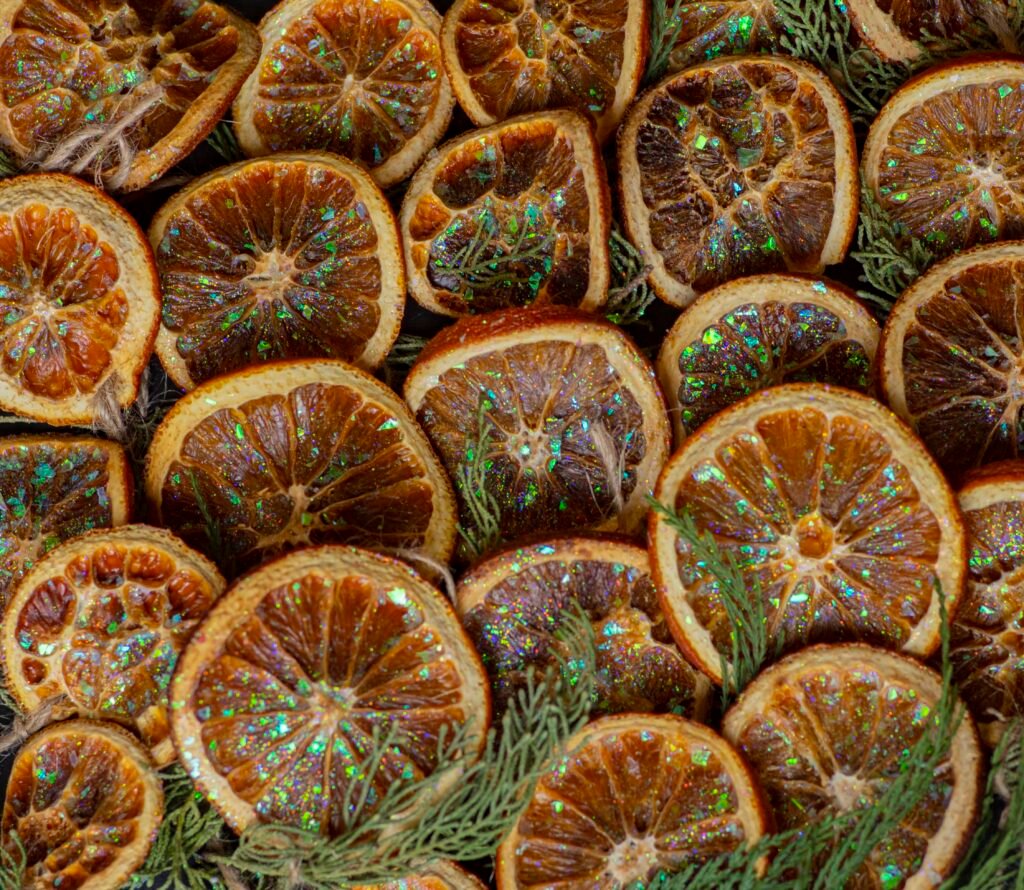So, you’ve probably heard about oxalates before, but did you know that there are actually different types of them? Yes, it’s true! Oxalates come in various forms and can be found in a wide range of foods. In this article, we’re going to explore the different types of oxalates and delve into their effects on our health. Whether you’re curious about oxalates or looking to make some dietary changes, this article has got you covered. So, let’s get started and uncover the fascinating world of different types of oxalates.

This image is property of images.unsplash.com.
Understanding Oxalates
What are oxalates?
Oxalates are a type of organic compound that contain the oxalate ion (C2O4^2-). They are naturally occurring substances found in various foods, plants, and even in our bodies. Oxalates are commonly found in the form of crystals, which can contribute to the formation of kidney stones in some individuals. While small amounts of oxalates are necessary for normal bodily functions, excessive consumption can lead to health issues.
Sources of oxalates
Oxalates can be found in a wide range of plant-based foods, including fruits, vegetables, nuts, and grains. Some of the common food sources of oxalates include spinach, rhubarb, beet greens, Swiss chard, cocoa, peanuts, and soy products. Additionally, oxalates can also be produced by our own bodies as a byproduct of metabolism. It’s important to note that cooking or processing food does not significantly reduce the oxalate content, so it’s important to be mindful of your overall intake.
Health effects of oxalates
While oxalates are a natural part of many plant-based foods, they can have both positive and negative effects on our health. On one hand, oxalates can bind with calcium in our bodies and inhibit its absorption, which can be problematic for individuals who need to maintain adequate calcium levels. On the other hand, oxalates can also have antioxidant properties and play a role in various biological processes. However, excessive consumption of oxalates can lead to the formation of kidney stones in susceptible individuals. It’s important to strike a balance and make informed choices when it comes to oxalate-rich foods.
Types of Oxalates
Calcium Oxalate
Calcium oxalate is one of the most common types of oxalates found in nature. It is formed when calcium ions (Ca^2+) react with oxalate ions (C2O4^2-) to create insoluble crystals. These crystals can accumulate and contribute to the formation of kidney stones. Calcium oxalate can exist in two forms: monohydrate and dihydrate. The monohydrate form is more common and appears as needle-like crystals, while the dihydrate form is less common and appears as octahedral crystals.
Sodium Oxalate
Sodium oxalate is another type of oxalate that is formed when sodium ions (Na^+) react with oxalate ions. It is a white crystalline powder that is soluble in water. Sodium oxalate has a wide range of industrial uses, including as a reducing agent, cleaning agent, and in the production of dyes and pigments. However, it is important to handle sodium oxalate with caution as it can be toxic if ingested or inhaled in large amounts.
Potassium Oxalate
Potassium oxalate is a salt that is formed when potassium ions (K^+) react with oxalate ions. It is commonly found in certain plants and foods, such as rhubarb and certain leafy greens. Potassium oxalate has applications in various industries, including photography, cleaning products, and metal etching. It is also used as a reducing agent in chemical reactions.
Magnesium Oxalate
Magnesium oxalate is the oxalate salt of magnesium and is found in various plants. It plays a role in plant physiology, including the storage and transport of magnesium ions. Magnesium oxalate can form insoluble crystals in the presence of oxalic acid, contributing to the formation of kidney stones. However, it is important to note that in its natural form in plants, magnesium oxalate is less likely to contribute to kidney stone formation.
Iron Oxalate
Iron oxalate is a coordination compound that consists of iron ions (Fe^2+ or Fe^3+) and oxalate ions. It can be formed through the reaction between iron salts and oxalic acid. Iron oxalate has various industrial uses, including as a catalyst in chemical reactions and as a precursor for the production of pigments and dyes. However, it is important to handle iron oxalate with caution as it can be toxic if ingested or inhaled.
Ammonium Oxalate
Ammonium oxalate is a salt that is formed when ammonium ions (NH4^+) react with oxalate ions. It can be synthesized through the reaction between ammonium hydroxide and oxalic acid. Ammonium oxalate has applications in various industries, including as a cleaning agent, in the production of pigments, and as a reagent in chemical reactions. It is important to handle ammonium oxalate with care as it can be toxic if ingested or inhaled.
Uric Acid Oxalate
Uric acid oxalate is a compound formed when uric acid, a byproduct of purine metabolism, reacts with oxalate ions. It can contribute to the formation of kidney stones, particularly in individuals with gout. Uric acid oxalate crystals can accumulate in the kidneys and lead to pain and discomfort. Managing uric acid levels through diet and medication can help reduce the risk of developing kidney stones.
Glycolate Oxalate
Glycolate oxalate is a compound formed when glycolic acid, a naturally occurring substance found in certain fruits and vegetables, reacts with oxalate ions. It can be found in small amounts in various plant-based foods. While glycolate oxalate itself is not a major contributor to kidney stone formation, it can contribute to the production of oxalate in the body.
Glyoxylate Oxalate
Glyoxylate oxalate is a compound that is formed when glyoxylic acid reacts with oxalate ions. It is a precursor in various biochemical reactions, including the biosynthesis of essential compounds in plants and animals. Glyoxylate oxalate has important roles in various metabolic pathways and is involved in the production of energy and other vital processes.
Formate Oxalate
Formate oxalate is a compound formed when formic acid reacts with oxalate ions. It can be synthesized through the reaction between formic acid and oxalic acid. Formate oxalate has applications in the field of organic synthesis, particularly in the production of pharmaceuticals and other chemical compounds. It can serve as a reagent or catalyst in chemical reactions.

This image is property of images.unsplash.com.
Understanding Calcium Oxalate
Formation and occurrence
Calcium oxalate is formed when calcium ions (Ca^2+) react with oxalate ions (C2O4^2-) in an aqueous solution. The formation of calcium oxalate crystals can occur in various body tissues, including the kidneys, where they can contribute to the formation of kidney stones. Calcium oxalate crystals can also accumulate in other organs, such as the bladder, prostate, and gallbladder.
Types of calcium oxalate
Calcium oxalate can exist in two main forms: monohydrate and dihydrate. Monohydrate calcium oxalate is the more common form and appears as needle-like crystals. It is the predominant form found in kidney stones. Dihydrate calcium oxalate is less common and appears as octahedral crystals. Both forms can contribute to the formation of kidney stones and can lead to discomfort and pain.
Contribution to kidney stones
The presence of calcium oxalate crystals is a major contributing factor to the formation of kidney stones. When urine becomes supersaturated with calcium and oxalate ions, they can combine and form crystals. These crystals can then accumulate and grow, eventually leading to the formation of kidney stones. Other factors, such as low fluid intake, certain medical conditions, and dietary factors, can also increase the risk of developing calcium oxalate kidney stones.
Calcium oxalate-rich foods
While calcium oxalate is present in various foods, it is important to note that not all individuals are equally susceptible to kidney stone formation. For individuals prone to calcium oxalate kidney stones, it is recommended to moderate the consumption of high-oxalate foods. Some examples of calcium oxalate-rich foods include spinach, rhubarb, beet greens, Swiss chard, cocoa, nuts, and soy products. It is important to maintain a balanced diet and consult with a healthcare professional for personalized dietary recommendations.
Sodium Oxalate
Properties and characteristics
Sodium oxalate is a white crystalline powder that is highly soluble in water. It has a salty taste and is often used as a reducing agent in chemical reactions. Sodium oxalate can also form complexes with metal ions, making it useful in various industrial applications.
Industrial uses of sodium oxalate
Sodium oxalate has a wide range of industrial uses due to its reducing properties and ability to form complexes with metal ions. It is used in the production of certain dyes and pigments, such as those used in textiles and printing. Sodium oxalate is also used as a cleaning agent, particularly for removing rust stains. Additionally, it is used in some photographic processes, as a standard in analytical chemistry, and as a reagent in organic synthesis.
Toxicity and health risks
While sodium oxalate has industrial uses, it is important to handle it with caution due to its potential toxicity. Ingesting or inhaling large amounts of sodium oxalate can be harmful and can cause various health issues. It is important to follow proper safety protocols when working with sodium oxalate and to ensure that proper protective measures are in place.

This image is property of images.unsplash.com.
Potassium Oxalate
Occurrence and sources
Potassium oxalate can be found in certain plants and is naturally present in a variety of foods. Rhubarb, beet greens, and certain leafy greens are examples of food sources that contain potassium oxalate. It is important to note that while some foods may contain potassium oxalate, the overall content and impact on health can vary depending on the specific food and individual factors.
Applications in various industries
Potassium oxalate has applications in various industries, including photography, cleaning products, and metal etching. In the photography industry, it is used as a developer and fixer in certain processes. In cleaning products, potassium oxalate may be used as a stain remover or rust remover. It can also be used in metal etching processes, where it helps to remove unwanted metal residues from surfaces.
Magnesium Oxalate
Role in plants
Magnesium oxalate plays a vital role in plants, particularly in the storage and transport of magnesium ions. It is involved in maintaining proper mineral balance and contributes to plant growth and development. Magnesium oxalate can be found in various plant tissues, including leaves and stems.
Formation and properties
Magnesium oxalate is formed when magnesium ions (Mg^2+) react with oxalate ions (C2O4^2-). It can exist in different crystal forms, depending on the conditions under which it is formed. Magnesium oxalate crystals can be insoluble in water and can contribute to the formation of kidney stones if they accumulate in the urinary tract.
Health benefits of magnesium oxalate
While excessive consumption of oxalates can contribute to kidney stone formation, it is important to note that in its natural form in plants, magnesium oxalate is less likely to cause issues. In fact, magnesium is an essential mineral that plays a crucial role in many bodily functions. Consuming foods rich in magnesium, such as leafy greens, can provide health benefits beyond the potential risk associated with oxalate content. Maintaining a balanced diet and lifestyle, along with consulting with a healthcare professional, can help individuals make informed choices about magnesium oxalate-rich foods.
Iron Oxalate
Formation and properties
Iron oxalate is formed when iron ions (Fe^2+ or Fe^3+) react with oxalate ions (C2O4^2-). It occurs as a coordination compound, meaning that the iron ions are bound to the oxalate ions through coordinate covalent bonds. Iron oxalate can exist in different forms, depending on the specific iron ion and oxidation state present.
Industrial uses of iron oxalate
Iron oxalate has various industrial uses due to its properties and reactivity. It is used as a catalyst in certain chemical reactions, where it facilitates the conversion of reactants into products. Iron oxalate is also used as a precursor in the production of pigments and dyes, contributing to their coloration. It is important to note that proper safety measures should be taken when working with iron oxalate, as it can be toxic if ingested or inhaled.
Toxicity and health implications
Iron oxalate should be handled with caution due to its potential toxicity. Ingesting or inhaling large amounts of iron oxalate can be harmful and can cause various health issues. It is important to follow proper safety protocols when working with iron oxalate and to ensure that protective measures are in place to prevent any potential risks.
Ammonium Oxalate
Synthesis and properties
Ammonium oxalate is synthesized through the reaction between ammonium hydroxide (NH4OH) and oxalic acid (C2H2O4). The combination of these two compounds forms ammonium oxalate, a salt with the formula (NH4)2C2O4. Ammonium oxalate is a white crystalline powder that is soluble in water.
Applications of ammonium oxalate
Ammonium oxalate has applications in various industries. It is used as a cleaning agent for the removal of rust stains and as a reagent in certain chemical reactions. Ammonium oxalate can also be used in the production of pigments and dyes, contributing to their coloration. It is important to handle ammonium oxalate with care, as it can be toxic if ingested or inhaled.
Safety considerations
Due to the potential toxicity of ammonium oxalate, proper safety precautions should be followed when handling this compound. It is important to wear appropriate protective gear, such as gloves and goggles, and to work in a well-ventilated area. In case of accidental ingestion or inhalation, seek immediate medical attention.
Uric Acid Oxalate
Formation and occurrence
Uric acid oxalate is formed when uric acid, a byproduct of purine metabolism, reacts with oxalate ions. Purines are naturally occurring compounds found in various foods, and the breakdown of purines in the body produces uric acid. Uric acid oxalate can accumulate in the kidneys and contribute to the formation of kidney stones, particularly in individuals with gout.
Relevance to gout and kidney stones
Gout is a medical condition characterized by the buildup of uric acid in the joints, leading to inflammation and pain. Uric acid oxalate can exacerbate gout symptoms and contribute to the development of kidney stones. Managing uric acid levels through medication, lifestyle changes, and dietary modifications can help reduce the risk of developing kidney stones and gout attacks.
Formate Oxalate
Synthesis and properties
Formate oxalate is synthesized through the reaction between formic acid (HCOOH) and oxalic acid (C2H2O4). The combination of these two compounds forms formate oxalate, a compound with the general formula (HCOO)2C2O4. Formate oxalate is a white crystalline powder that is sparingly soluble in water.
Applications of formate oxalate
Formate oxalate has applications in the field of organic synthesis, particularly in the production of pharmaceuticals and other chemical compounds. It can serve as a reagent or catalyst in various chemical reactions, facilitating the formation of new compounds. The versatility of formate oxalate makes it useful in the development of new drugs and technologies.
In conclusion, understanding the different types of oxalates is crucial for making informed decisions about our diet and overall health. While oxalates can be found in various foods and can have positive effects on our bodies, excessive consumption or certain types of oxalates can contribute to the formation of kidney stones and other health issues. By understanding the formation, properties, and applications of different types of oxalates, we can navigate our dietary choices and lifestyle to promote optimal health and well-being.

